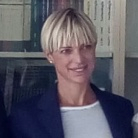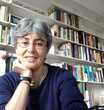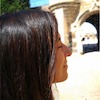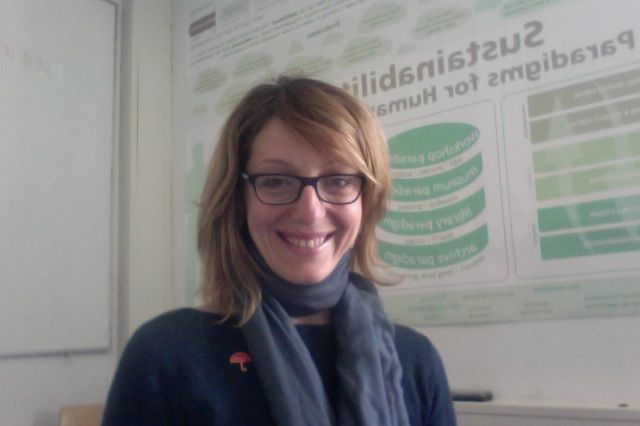Studying at the University of Verona
Here you can find information on the organisational aspects of the Programme, lecture timetables, learning activities and useful contact details for your time at the University, from enrolment to graduation.
Academic calendar
The academic calendar shows the deadlines and scheduled events that are relevant to students, teaching and technical-administrative staff of the University. Public holidays and University closures are also indicated. The academic year normally begins on 1 October each year and ends on 30 September of the following year.
Course calendar
The Academic Calendar sets out the degree programme lecture and exam timetables, as well as the relevant university closure dates..
| Period | From | To |
|---|---|---|
| Semester 1 | Oct 2, 2017 | Jan 20, 2018 |
| Semester 2 | Feb 26, 2018 | Jun 9, 2018 |
| Session | From | To |
|---|---|---|
| Winter session | Jan 22, 2018 | Feb 24, 2018 |
| Summer session | Jun 11, 2018 | Jul 28, 2018 |
| Autumn session | Aug 27, 2018 | Sep 22, 2018 |
| Session | From | To |
|---|---|---|
| LAUREE LINGUE - sessione autunnale a.a. 2016/2017 | Dec 18, 2017 | Dec 21, 2017 |
| LAUREE LINGUE - sessione invernale a.a. 2016/2017 | Mar 23, 2018 | Mar 29, 2018 |
| LAUREE LINGUE - sessione estiva | Jul 16, 2018 | Jul 21, 2018 |
| LAUREE LINGUE - sessione autunnale | Nov 12, 2018 | Nov 17, 2018 |
| LAUREE LINGUE - sessione invernale | Apr 12, 2019 | Apr 18, 2019 |
| Period | From | To |
|---|---|---|
| All Saints Day | Nov 1, 2017 | Nov 1, 2017 |
| Immaculate Conception | Dec 8, 2017 | Dec 8, 2017 |
| Christmas break | Dec 22, 2017 | Jan 7, 2018 |
| Easter break | Mar 30, 2018 | Apr 3, 2018 |
| Liberation Day | Apr 25, 2018 | Apr 25, 2018 |
| Labour Day | May 1, 2018 | May 1, 2018 |
| Patron Saint Day | May 21, 2018 | May 21, 2018 |
| Republic Day | Jun 2, 2018 | Jun 2, 2018 |
| Summer break | Aug 13, 2018 | Aug 18, 2018 |
Exam calendar
Exam dates and rounds are managed by the relevant Foreign Languages and Literatures Teaching and Student Services Unit.
To view all the exam sessions available, please use the Exam dashboard on ESSE3.
If you forgot your login details or have problems logging in, please contact the relevant IT HelpDesk, or check the login details recovery web page.
Academic staff
 alessandro.bigardi@univr.it
alessandro.bigardi@univr.it
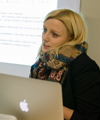
Bradas Marija
 marija.bradas@univr.it
marija.bradas@univr.it
 paolamaria.caleffi@univr.it
paolamaria.caleffi@univr.it
 veronica.gobbato@univr.it
veronica.gobbato@univr.it
 tiziana.mancinelli@univr.it
tiziana.mancinelli@univr.it
 silvia.zollo@univr.it
silvia.zollo@univr.it
Study Plan
The Study Plan includes all modules, teaching and learning activities that each student will need to undertake during their time at the University.
Please select your Study Plan based on your enrollment year.
1° Year
| Modules | Credits | TAF | SSD |
|---|
1st foreign language2nd foreign language1st foreign literature2nd foreign literature2° Year activated in the A.Y. 2018/2019
| Modules | Credits | TAF | SSD |
|---|
1st foreign language2nd foreign language1st foreign literature2nd foreign literatureOne course to be chosen among the following3° Year activated in the A.Y. 2019/2020
| Modules | Credits | TAF | SSD |
|---|
1st foreign language2nd foreign languagePhilology of the first or second language| Modules | Credits | TAF | SSD |
|---|
1st foreign language2nd foreign language1st foreign literature2nd foreign literature| Modules | Credits | TAF | SSD |
|---|
1st foreign language2nd foreign language1st foreign literature2nd foreign literatureOne course to be chosen among the following| Modules | Credits | TAF | SSD |
|---|
1st foreign language2nd foreign languagePhilology of the first or second language| Modules | Credits | TAF | SSD |
|---|
Legend | Type of training activity (TTA)
TAF (Type of Educational Activity) All courses and activities are classified into different types of educational activities, indicated by a letter.
History of Illustration (2018/2019)
Teaching code
4S00903
Teacher
Coordinator
Credits
6
Language
Italian
Scientific Disciplinary Sector (SSD)
L-ART/02 - HISTORY OF MODERN ART
Period
I semestre dal Oct 1, 2018 al Jan 12, 2019.
Learning outcomes
Learning outcomes, methodology
This course provides the elements students need to understand the relationship between writing and the figurative apparatus, including book ornamentation, and to be able to assess the aesthetic, communicative and didactic functions of book illustration.
It begins with the consideration of the book as an “artistic” product with its own formal and stylistic features. To this end looking to the past, even the remote past, serves as a premise for approaching the book with greater awareness and understanding how its design and production have evolved in contemporary communicative media (video, computer-based, digital etc.). In other words, the educational objectives are to provide a historical background combining forms of continuity and technological innovations, aesthetics and communication, that will be useful for students interested in pursuing a career and making choices in the field of publishing.
The course focuses on and brings together three fundamental elements. The first concerns the aesthetics of font and typesetting, that is, the “architectural organism” considered in terms of its rule-bound formal aspects, while contemporary examples are approached as instances of experimental and provocative “breaks” with tradition. To this end, the course briefly addresses the main stages in the emergence of the alphabets of ancient civilizations up to the formation of Roman writing, the foundation of the classical tradition of all subsequent printing activities including contemporary examples.
There will also be institutional references to the significance of writing and the image in relation to texts in ancient civilizations, including those outside of Europe and especially in connection with their religions and symbolic or sacred values.
The second element regards the procedures used to create figurative designs and illustrations, for example illumination, woodblock and intaglio in their various forms (direct and indirect, involving the graver and etching with its multiple variations) leading up to the most modern industrial systems of reproduction, beginning with lithography and going on to cover the ensuing evolution of industrial printing. The course also addresses the terminology used in the various European languages.
The third element involves a diachronic investigation of the history of illustrated books from the birth of the printing press to the modern and contemporary ages, making note of the typological features which, albeit through changing styles and techniques, have persisted over time. The study of this latter element will involve considering the structural nature of the code and the relationship between the field of writing and the field of the image from late antiquity through the main junctures of the Middle Ages, such as the Romanesque and Gothic periods.
Pedagogically speaking, students will be guided in learning the stylistic and evaluative method of analysis applied to illustrated books. The same method is used in the course on modern art history and this is another reason why the latter course should be considered preliminary. In the classroom, students will be engaged in discussion following a seminar-style approach in order to aid them in acquiring the appropriate analytical vocabulary.
Approaching the history of illustration using the methods of art history requires locating the key figures of the art of printing and illustration within the geography and history of Italian and European culture.
Due to the brief duration of the course, it will not be possible to hold classes at libraries or temporary exhibitions. Instead, students will be provided with more in-depth information during class sessions, particularly as concerns the main stages of the history of illustration, including contemporary illustration.
At any rate, students will be permitted to choose these arguments according to their own interests. On the basis of the specialized literature presented in class, students will have to choose an exam topic for which they demonstrate having assimilated the methodological guidelines provided throughout the course.
Program
* Introduction
1. Illustration and decoration. Terminology and meanings. Decorum and decoration in classic and modern aesthetics.
2. The birth of writing. First media and first historical evidence.
3. Roman writing.
4. From rotolo to codice.
5.-6. The miniature technique. First miniature codex, exemplifications of the relationship between text and image.
7. Civilization, religious books and illustrations: Judaism, Islam etc.
8. Codex with illustrations: geographic areas.
The Church of Rome and the role of the image. The spread of Christianity, Benedictine order and the production of illustrated codex. The Church of Byzantium and the civilization of the illustrated codex, the iconoclasm and its theological assumptions. Palestine, Syria and Christian Africa. Insular culture and civilization of illustrated codex.
9. Periodization and miniature history in the Middle Ages.
The Carolingian and Ottoman civilization. The Romanesque, the Gothic. The Italian Gothic miniatures. Late Gothic in Europe and in Italy.
10.-11. The humanist codex with illustrations. The invention of the press and the first illustrated books in Germany and Italy, literary genres and image roles. Incunabuli illustrated with particular regard to Roman proto-typists and trade situation in Venice up to Aldo Manuzio.
12. Theory. Reading and commentary of the Iubilatio. Alberti, Feliciano Feliciano, Mantegna and the littera mantiniana, Damiano da Moille, Luca Pacioli, De Divina proportione.
13.-14. The woodcut. The great protagonists of the xylographic technique. Schongauer, Dürer, Luca of Leida, Titian, Ugo da Carpi.
15. Calcografia, charateristics of direct engraving. Bulino, puntasecca, maniera nera. Pollaiolo, Mantegna, Raimondi.
16. Intaglio printing, engraving and etching. Acquaforte, acquatinta, ceramolle, lavis. Parmigianino, Barocci, Callot; Cort, Carracci.
17. The title page: origins and evolution. Functions and figurative typologies.
18. Key moments of the typographical font in the 16th century, Manuzio and his legacy. The protagonists in Italy and Europe.
19. Fundamentals of illustrated publishing in the 16th century.
20. Main artists in Italy and Europe (16th century).
21. Fundamentals of illustrated publishing in the 17th century.
22. Rembrandt.
23. Fundamentals of illustrated publishing in the 18th century.
24. Piranesi. Tecnique, genres, international trade.
25. Main artists in Europe (18th century). Bodoni and Neoclassicism. Typographic manuals.
26. Litography and serigraphy.
27. Innovations in printing techniques and illustrated publishing.
The birth of photography and illustration, technical evolutions, new reproductive possibilities, new editorial lines.
28. Industrialization of the font in the 19th century.
29. Manifesto, birth and diffusion in Italy, in Europe and America.
30. The birth of children’s book. The comic.
31. Movimenti and avant-garde.
Morris and Arts and Crafts, Art Nouveau, Liberty, Secession, Expressionism.
Cubism, Futurism, Dada, Russian avant-garde. Bauhaus and modern design.
Pop art. Trends and protagonists in the 20th century.
32.-33. 20th century in Italy: Ratta and Bertieri; Scuola del Libro di Urbino; State Illustration. The book of art in the 20th century.
** Conclusions and new perspectives. From calam to press, from computer to digital. The figure of the graphic and editorial curator today.
Bibliography
Handouts available at the copy shop ‘Replay’. This compendium indicates the exact bibliography students need to study for the examination; for specific information about the texts contained therein, students should consult the Italian version of the program. Students are also advised to study certain concepts (ex. illustration, decoration, ornamentation) and authors mentioned in these texts (ex. Pollaiolo and Mantegna - graphic works - Schongauer, Dürer, Luca di Leida, Raimondi, Ugo da Carpi, Rembrandt, Piranesi, Bodoni) in more depth and detail by drawing on encyclopedia entries or art history manuals.
| Author | Title | Publishing house | Year | ISBN | Notes |
|---|---|---|---|---|---|
| B. Ribaudo, S. Righetti (DISPENSA DISPONIBILE PRESSO LA COPISTERIA REPLAY) | Compendio e redazione degli appunti del corso di Storia dell’illustrazione del prof. Giorgio Fossaluzza |
Examination Methods
Final Exam: Written test
Written exam with five open-ended questions (4 hours long). There is also a short essay question on a topic chosen from among those listed in the Italian version of the program (see 'Modalità d'esame'). These topics refer to some of the additional information provided in lectures. Other topics selected by the student to be studied in more depth must be agreed-on before the written exam. The student will be able to attach the essay question to the written exam during the examination itself. In any case, students are required to present a short abstract they have written.
Furthermore, you can download on the web page some images (even with comments) previously analyzed in lessons. During the exam, recognition, typological and stylistic comment of these images are required.
Type D and Type F activities
To discover all the teaching activities accredited by the foreign teaching college click here
Career prospects
Module/Programme news
News for students
There you will find information, resources and services useful during your time at the University (Student’s exam record, your study plan on ESSE3, Distance Learning courses, university email account, office forms, administrative procedures, etc.). You can log into MyUnivr with your GIA login details: only in this way will you be able to receive notification of all the notices from your teachers and your secretariat via email and soon also via the Univr app.
Student login and resources
Assegnazione tutore
Attività accreditate D/F
Calendario didattico dettagliato
Cambio lingua curriculare
Competenze informatiche
Competenze linguistiche (prima e seconda lingua)
Competenze linguistiche in triennale (terza lingua CFU F)
Compilazione del piano didattico
Corso di Lingua portoghese
Erasmus+ e altre esperienze all'estero
Linguistic training CLA
Graduation
List of theses and work experience proposals
| Stage | Research area |
|---|---|
| PROGETTO MAMBRINO Stage per bibliografia | Various topics |
Stage e tirocini
Nel piano didattico della laurea triennale in Lingue e culture per l’editoria (L11 ED) è previsto un tirocinio/stage obbligatorio (CFU 6).
Le attività di stage sono finalizzate a far acquisire allo studente una conoscenza diretta in settori di particolare interesse per l’inserimento nel mondo del lavoro e per l’acquisizione di abilità professionali specifiche.
Le attività di stage sono svolte sotto la diretta responsabilità di un singolo docente presso studi professionali, enti della pubblica amministrazione, aziende accreditate dall’Ateneo veronese.
I crediti maturati in seguito ad attività di stage saranno attribuiti secondo quanto disposto nel dettaglio dal “Regolamento d’Ateneo per il riconoscimento dei crediti maturati negli stage universitari” vigente.
- Tutte le informazioni in merito agli stage per futuri studenti sono disponibili alla pagina Stage e tirocini.
- Tutte le informazioni in merito agli stage per studenti iscritti sono pubblicate in MyUnivr - come fare per - stage e tirocini.
- Tutte le informazioni in merito agli stage per le aziende sono disponili alla pagina Stage e tirocini per azienze.
Ulteriori informazioni al seguente link https://www.univr.it/it/i-nostri-servizi/gestione-carriere-studenti-lingue-e-letterature-straniere/stage-e-tirocini-lingue-e-letterature-straniere

 +39 045802 8409
+39 045802 8409

